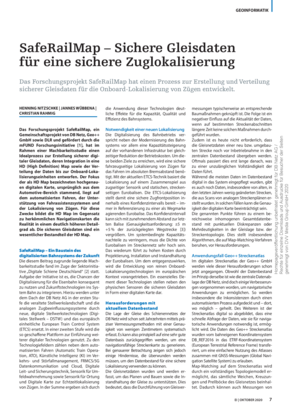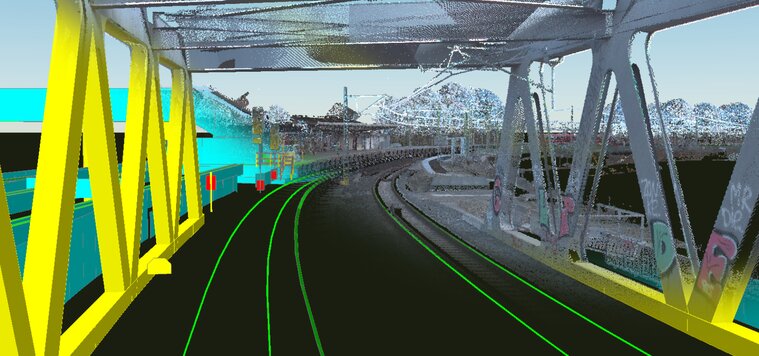
Digital Register
Standardized data bases and a central data source for digital infrastructure data are essential for the new systems of digital rail operations. Data is stored, updated and processed uniformly in the so-called digital register.
Our partners
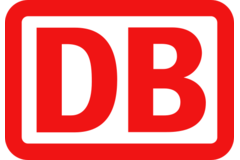
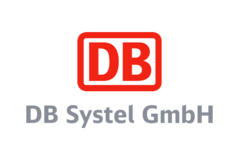
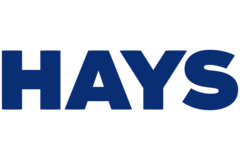
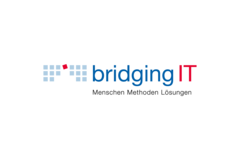
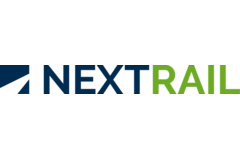
Technologies
The "single source of truth" for infrastructure data
Standardized data bases and a central data source for digital infrastructure data are essential for the new systems of digital rail operations. Data is stored, updated and processed uniformly in the so-called digital register. For the most part, this involves existing infrastructure data from various railroad areas, such as "timetable and operation", "control and safety technology" or "planning, construction and maintenance". These data records are aggregated, consolidated and supplemented with new data records. They are necessary for applications such as fully automated, driverless driving. In addition, the digital register serves as an interface for a large number of key functionalities required for the digitalization and automation of rail operations, making it a "data hub".
The data in the digital register can be roughly divided into 3D and topology data. The 3D data describes localized objects such as centerlines of track, platforms, catenary supports, signs, etc. They are stored as simplified 3D objects. They are saved as simplified 3D objects. Topology data, on the other hand, describes the logical connections of track elements. This includes, for example, the connections between points or the connections between points and track terminations. They are supplemented with data on relevant infrastructure elements (e.g. level crossings) and operational infrastructure data (e.g. speed profiles).
The 3D data is generated by high-precision Lidar point clouds that "scan" objects in three-dimensional space. The Lidar technology attached to measurement vehicles is essentially lasers that "scan" their surroundings. The detected objects are classified, specified and "labeled". In other words, they are identified and marked. These labeled areas of the point cloud are stored in the digital register. The data serves as the basis for the creation of high-resolution digital maps (so-called HD maps). Among other things, they are required for the perception of the surroundings by sensors at the front of the train or for locating trains.
- Digital rail operations require highly accurate and up-to-date infrastructure data.
- The "Digital Register" (DR) provides a standardized data basis for this and will be the central data source in future .
- It contains 3D data and topology data for the entire rail infrastructure and all track-related facilities, which are provided centrally and updated on an ongoing basis.
- The DR data is the basis for high-resolution digital maps (HD maps) of the rail network, which are required for numerous digital applications.
High-resolution digital maps in the digital register as support for fully automated driving
The Sensors4Rail project equipped a Hamburg S-Bahn train with an extensive sensor setup for the first time and tested sensor-based perception systems, e. g. for obstacle detection. The sensor setup included cameras, radars, LiDAREe, a satellite navigation system (GNSS) and an intertial measurement unit (IMU). The perception systems can monitor the route and localize the train during driverless driving at the highest automation level.
Several use cases were tested during the project. The HD-Map provided the basis for this. Track-accurate localization was achieved by combining 3D centerlines of track from the HD-Map, signal sources (GNSS, IMU, wheel revolution counters) and detected landmarks (with radar and Lidar). The figure shows landmark detection with Lidar sensors based on the detection of catenary support.
On the one hand, the distance from the top of the train to the masts is indicated (environment detection). Secondly, reference is made to the HD map on which the masts are geographically marked (not shown). This allows the train to locate itself in real time. In addition to landmark detection and localization of the train, the functions of person detection, train detection, track detection and track clearance detection were also implemented with the support of the HD map. In order to be able to provide sufficiently up-to-date and accurate map data, over 120 km of the Hamburg S-Bahn network was recorded in the project and "scanned" and "labeled" using the process described above.
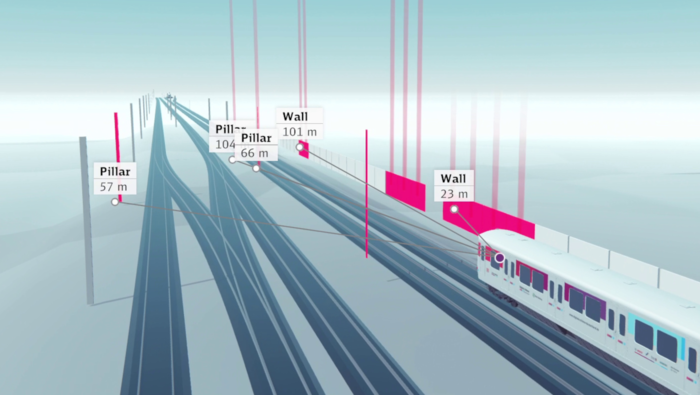
For 3D data and driverless rail operation in the GoA4 automation level, the requirements for the data that the HD-Map must provide must be further validated in near-series research projects in the coming years.
The process of recording, storing, providing, evaluating and using the data will also play a special role here. This process has already been set up theoretically in the SafeRailMap project. It must be further developed and put into practice in collaboration with DB Netz's inventory data management. Furthermore, new methods and data sources should improve the labeling and validation of 3D data (e.g. Building Information Modeling, BIM).
You can find out more about the Sensors4Rail project here.
In the Digital Node Stuttgart (DKS) pilot project, highly automated driving is being implemented in passenger services. This requires vehicle equipment of the "ATO GoA2" level (Automatic Train Operation with Grade of Automation 2). Driving is based on ETCS Level 2 trackside equipment without signals. At this level, the trains start, accelerate, brake and stop independently. The train drivers only monitor the route and only intervene in the event of disruptions.
The vehicles are being equipped on behalf of the federal state of Baden-Württemberg and DB Regio - partly as part of an innovation cooperation. The Automated Rail@DKS project is being implemented on the lineside. The following technologies are being implemented for the Stuttgart S-Bahn and other regional services: the first expansion stage of the Digital Register (Basic DR), the preliminary stage of a capacity and traffic management system (CTMS Translator) and the trackside ATO functionality (ATO Trackside).
The illustration shows the on-board and trackside equipment in the DKS.
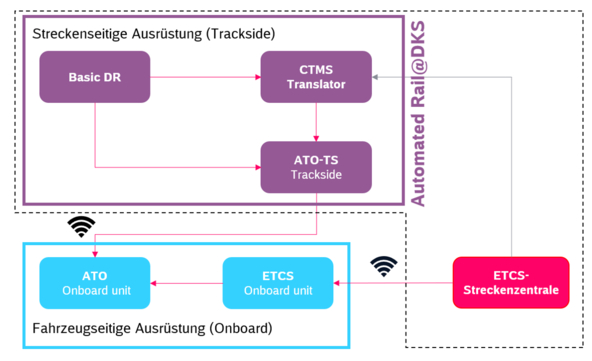
Operational infrastructure data is required to implement ATO GoA2. They must comply with the European standard (ATO over ETCS specification).
Based on the data from the Digital Register, the ATO Onboard Unit calculates the acceleration and braking curves. As a central data warehouse for infrastructure data, the digital register is therefore an essential component for the implementation of highly automated driving in the rail system of the future. The development of a "Basic-DR" as a cloud solution is intended to prepare for the upcoming Germany-wide GoA2 large-scale rollout. One of the advantages of the cloud solution is that the entire data management of the basic DR can be centralized and independent of the region.
The Digital Register is being used for the first time with the implementation of the "Digitaler Knoten Stuttgart" pilot project. The technological foundations developed there are to be used for a later GoA2 large-scale rollout - i.e. the rollout of highly automated driving across the entire route network in Germany.
Europe's Rail Joint Undertaking – ERJU
The infrastructure data provided by the Digital Register is to be made available to all railroad undertakings (RUs) in the same way in future automatic train operations in the GoA2 to GoA4 stages. For this reason, it is necessary to standardize the underlying data model and the interfaces of the systems. Furthermore, the standardization of infrastructure data and interfaces is intended to promote the interoperability of rail transport in Europe. The Digital Register is therefore also a central component of the so-called "Innovation Pillar" of the Europe's Rail Joint Undertaking funded project "R2DATO" (Rail to Digital automated up to Autonomous Train Operation), which is part of the EU research program "Horizon Europe" and aims to create the basis for pioneering future technologies for the rail sector.
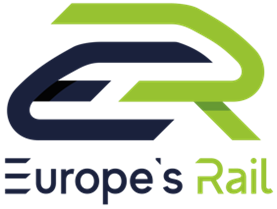
Find out more about ERJU here.
-
Article in „EI - Der Eisenbahningenieur" | SafeRailMap | 10/20 (only in German)
The SafeRailMap research project, a joint project of DB Netz, Geo++ GmbH and DLR and funded by the mFUND research initiative, has designed an ideal process for creating safe digital track data, integrating it into an HD map and distributing the data to the onboard localization units as part of a feasibility study.
Source: Der Eisenbahningenieur
